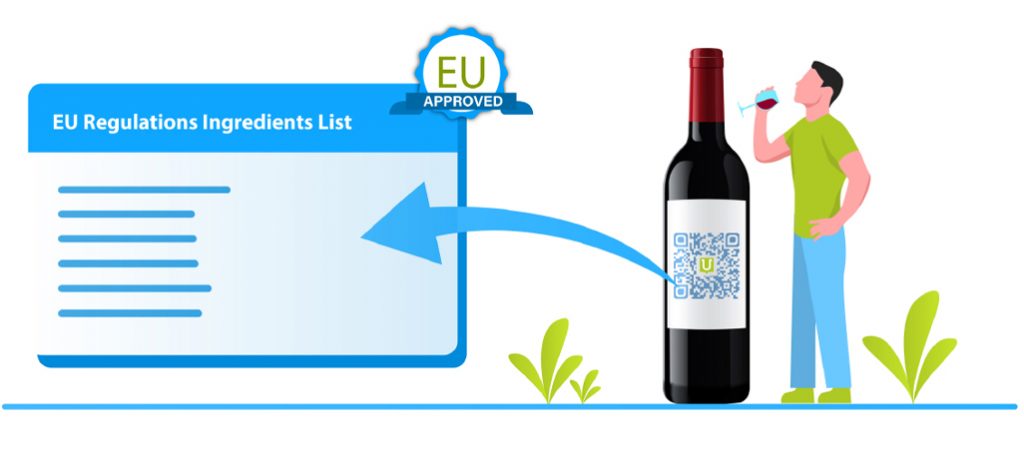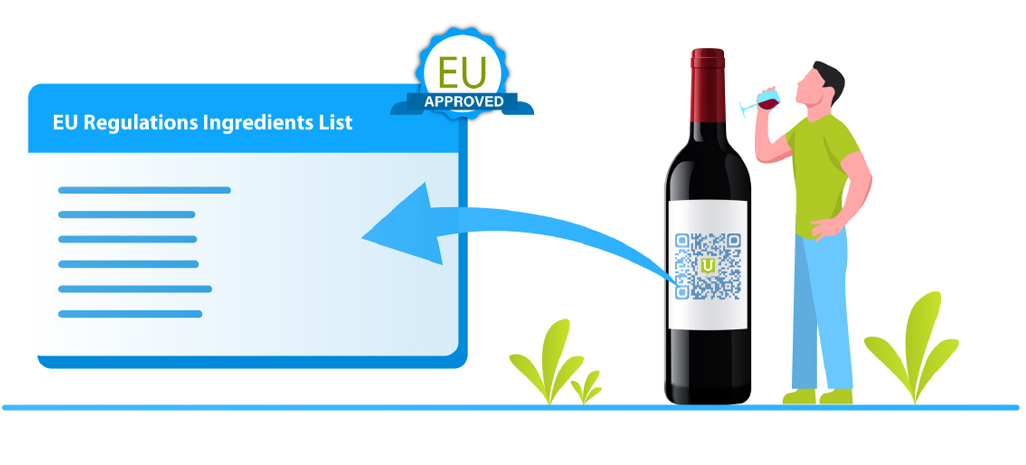
While cultural and socio-economic factors vary from region to region all over the world, the agricultural sector has always been the backbone of society and, as such, remains consistent. While that fact doesn’t change, the regulations governing the operations of the agricultural sector are subject to changes and improvements over time. The Common Agricultural Policy (CAP) was first inaugurated by the European Union in 1962 and has ensured financial support to farmers and wine producers alike so that the agricultural sector can continue to produce in the best interests of all.
The latest reform in EU regulations of CAP has been discussed since 2017 and was cemented in legislation on December 6, 2021. These new regulations will become effective from January 1st 2023; as such, those in the agricultural sector will be required to adhere accordingly.
Wine Labelling goes Electronic
Amongst other things, the new CAP regulation requires the EU Wine Industry to step up how they do their labelling. Wine Producers were previously not required by the EU to provide a comprehensive list of ingredients on their product packaging, as one would expect to see on food packaging. Due to the inherently limited printing space on Wine bottle labels, the information previously required was the calorie count and the presence of allergens, if any.
However, in the age of electronics and QR codes, the limitations of physical labelling quickly become irrelevant. The space previously occupied by nutritional information can now boast a QR code that can be scanned for a much more comprehensive list of ingredients, alongside a complete breakdown of the product’s nutritional information.
This not only makes the labels of Wine Bottles more streamlined and neater to look at but also allows for more transparency between consumers and producers. Almost everyone has a smartphone in their pocket that can scan a QR code and open a website link to the relevant information. This new regulation may be the first step in modernising how Wine Producers communicate with their consumers.
New Regulation, New Opportunity

Changes in regulations make most companies and businesses nervous because they have to adhere to them and make top-down changes to their operations. However, this electronic labelling requirement might give Wine Producers in the EU an opportunity to step up their advertisement game.
The new regulation requires electronic labels with comprehensive information about ingredients on all Wine products sold within the EU. This includes Wine producers from outside the EU as well. While Wine Producers selling outside the EU have the added privilege of using this new digital channel to relay information to consumers to advertise their products.
Simply put, the new regulation endows local producers in the industry with a whole new stage for their marketing and sales. To make the most of it, it becomes impertinent for the Winemakers to design their QR codes wisely. While a good QR code can help their brands relay information more effectively, a poorly designed QR code can reflect badly on their brand.
Not only will a failed QR code put off any customer who attempts to scan it – only to be met with a link that didn’t open, but it will also mean a failure for the brand’s compliance with the new regulations. When adherence to a new regulation can increase a brand’s competitiveness in tandem, there’s a win-win situation. And that’s where having QR code partners like Unitag can make all the difference.
Since the regulations allow sales and marketing information with variation in regions, the QR code must also adapt in function based on where it’s being scanned. Unitag uses geotagging to make the most out of a single, dynamic QR code. This allows EU Wine industry players to market their products alongside the required information while adhering to EU competition rules.
This 2023 CAP reform also gives customers greater transparency regarding the finer details of the alcoholic beverages they consume. Now they can scan a code and read the ingredients, such as the alcohol content and whether or not there are additives in their Wine. Wine connoisseurs will appreciate this greater detail of information regarding the process involved in making their wine from the vineyards to the bottles.
Of course, where digitisation is concerned, there’s also the issue of user data being tracked ad collected electronically. Whether we like it or not, as much as technology makes our lives easier, it also compromises our privacy more than ever. The CAP electronic labelling regulations prohibit the collection of user data. However, QR code services outside the EU are not subject to adhering to this prohibition. As such, the wrong partner can put a Wine Maker in violation of the regulation, which can sully the trust between consumers and the industry.
This is where partnering with a QR code specialist like Unitag becomes crucial. Just as there needs to be transparency between sellers and buyers of Wine, there needs to be transparency and trust between the QR code service provider and the Wine Industry. Considering all these factors, this new CAP regulation can be a huge step in how the EU Wine Industry handles customer relations and marketing.
Unitag has developed its wine industry-specific product as the fruit of a partnership with Occitanic, a renowned European WineTech player. This collaboration has ensured that the product was fit for the complex wine and spirits industry market, giving customers the best experience possible for their regulatory needs.

